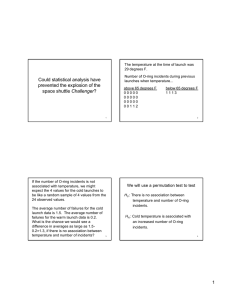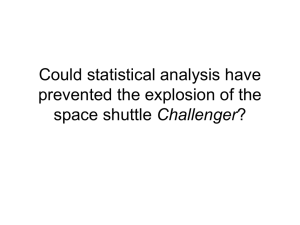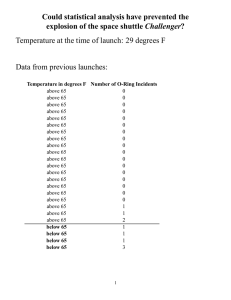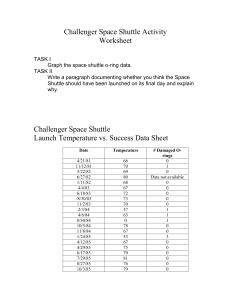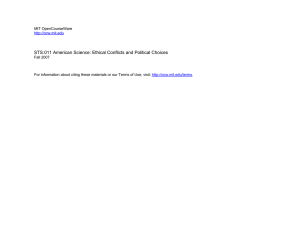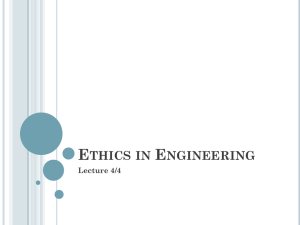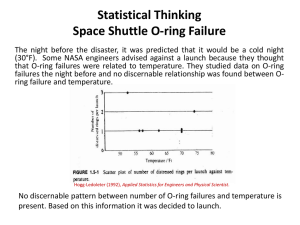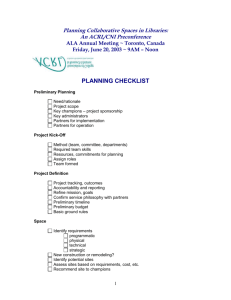Takehome 1 - UCSB Economics
advertisement
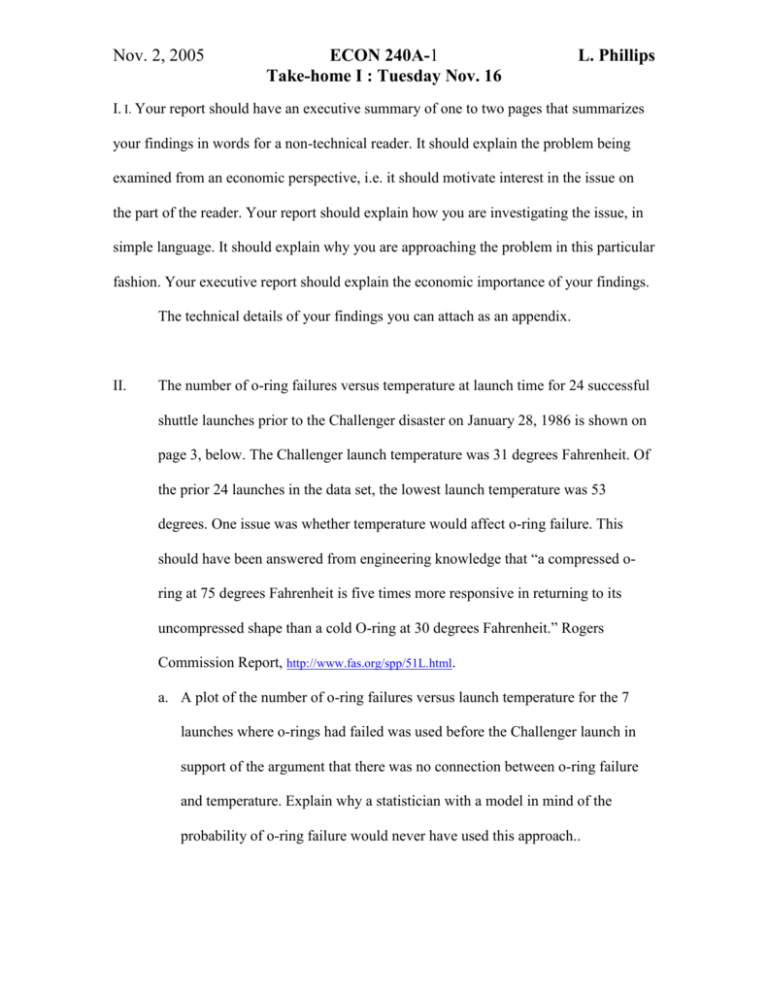
Nov. 2, 2005 ECON 240A-1 Take-home I : Tuesday Nov. 16 L. Phillips I. I. Your report should have an executive summary of one to two pages that summarizes your findings in words for a non-technical reader. It should explain the problem being examined from an economic perspective, i.e. it should motivate interest in the issue on the part of the reader. Your report should explain how you are investigating the issue, in simple language. It should explain why you are approaching the problem in this particular fashion. Your executive report should explain the economic importance of your findings. The technical details of your findings you can attach as an appendix. II. The number of o-ring failures versus temperature at launch time for 24 successful shuttle launches prior to the Challenger disaster on January 28, 1986 is shown on page 3, below. The Challenger launch temperature was 31 degrees Fahrenheit. Of the prior 24 launches in the data set, the lowest launch temperature was 53 degrees. One issue was whether temperature would affect o-ring failure. This should have been answered from engineering knowledge that “a compressed oring at 75 degrees Fahrenheit is five times more responsive in returning to its uncompressed shape than a cold O-ring at 30 degrees Fahrenheit.” Rogers Commission Report, http://www.fas.org/spp/51L.html. a. A plot of the number of o-ring failures versus launch temperature for the 7 launches where o-rings had failed was used before the Challenger launch in support of the argument that there was no connection between o-ring failure and temperature. Explain why a statistician with a model in mind of the probability of o-ring failure would never have used this approach.. Nov. 2, 2005 ECON 240A-2 Take-home I : Tuesday Nov. 16 L. Phillips b. What is the lowest launch temperature for a launch where the o-rings did not fail? c. Using the data below, fit a linear probability model of o-ring failure versus launch temperature. Show a plot of the data and the fitted model. d. Is there a significant dependence of the probability of o-ring failure on temperature? Explain. e. Of course, there had been successful launches with o-ring failure prior to the Challenger launch, so the number of o-rings failing might be an issue. Plot the number of o-ring failures versus launch temperature with the OLS fitted regression superimposed. Extrapolate this regression to 31 degrees to obtain the predicted number of o-ring failures. Of course, the slope of this regression is biased towards zero. If the true relationship has a steeper slope, what is the likely implication for the predicted number of o-ring failures at 31 degrees? f. Given your analysis, would you have recommended a launch under the conditions facing the Challenger proceed or not? Justify your decision. g. Estimate a count model, i.e. the number of O-Rings that fail as explained bt temperature. Eviews will estimate a Poisson count model. Plot the estimated Number of failed O-Rings against temperature. Nov. 2, 2005 ECON 240A-3 Take-home I : Tuesday Nov. 16 Prior Challenger Launches # ORINGS Fail Launch TEMP 3 53 1 57 1 58 1 63 0 66 0 67 0 67 0 67 0 68 0 69 1 70 1 70 0 70 0 70 0 72 0 73 2 75 0 75 0 76 0 76 0 78 0 79 0 80 0 81 L. Phillips
